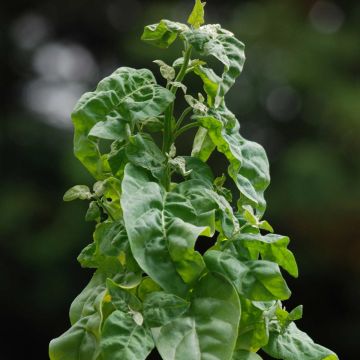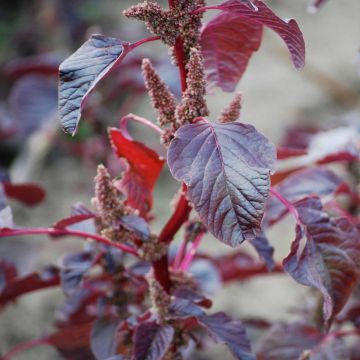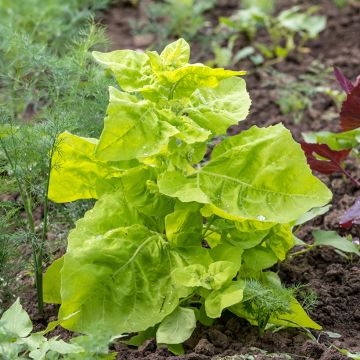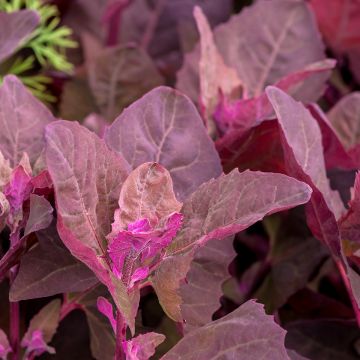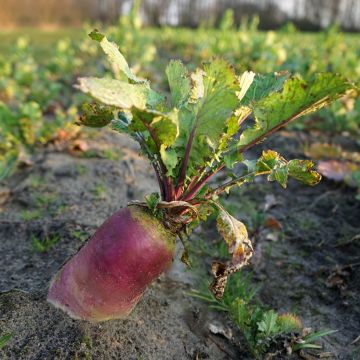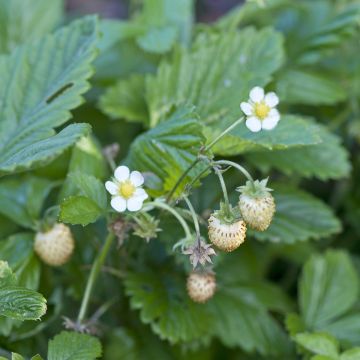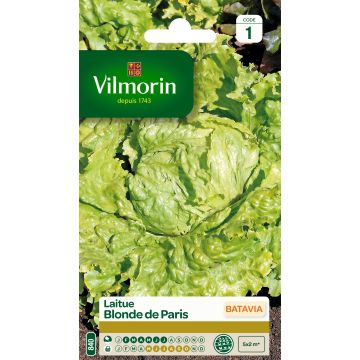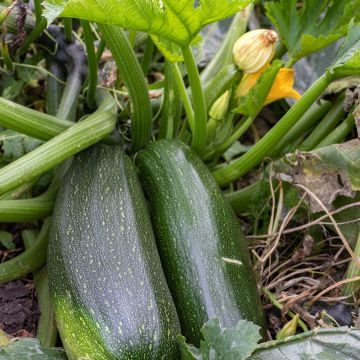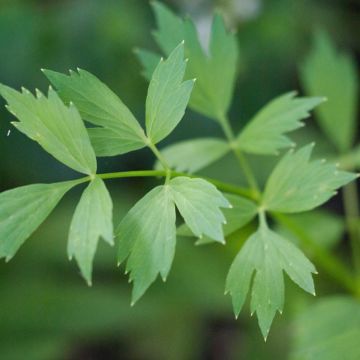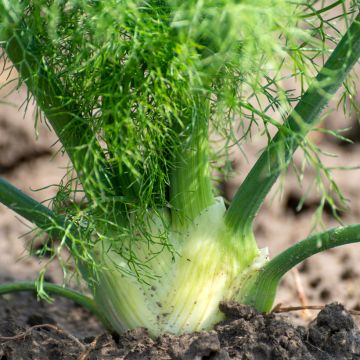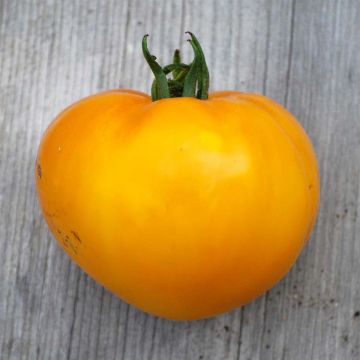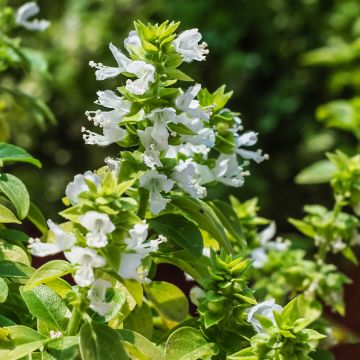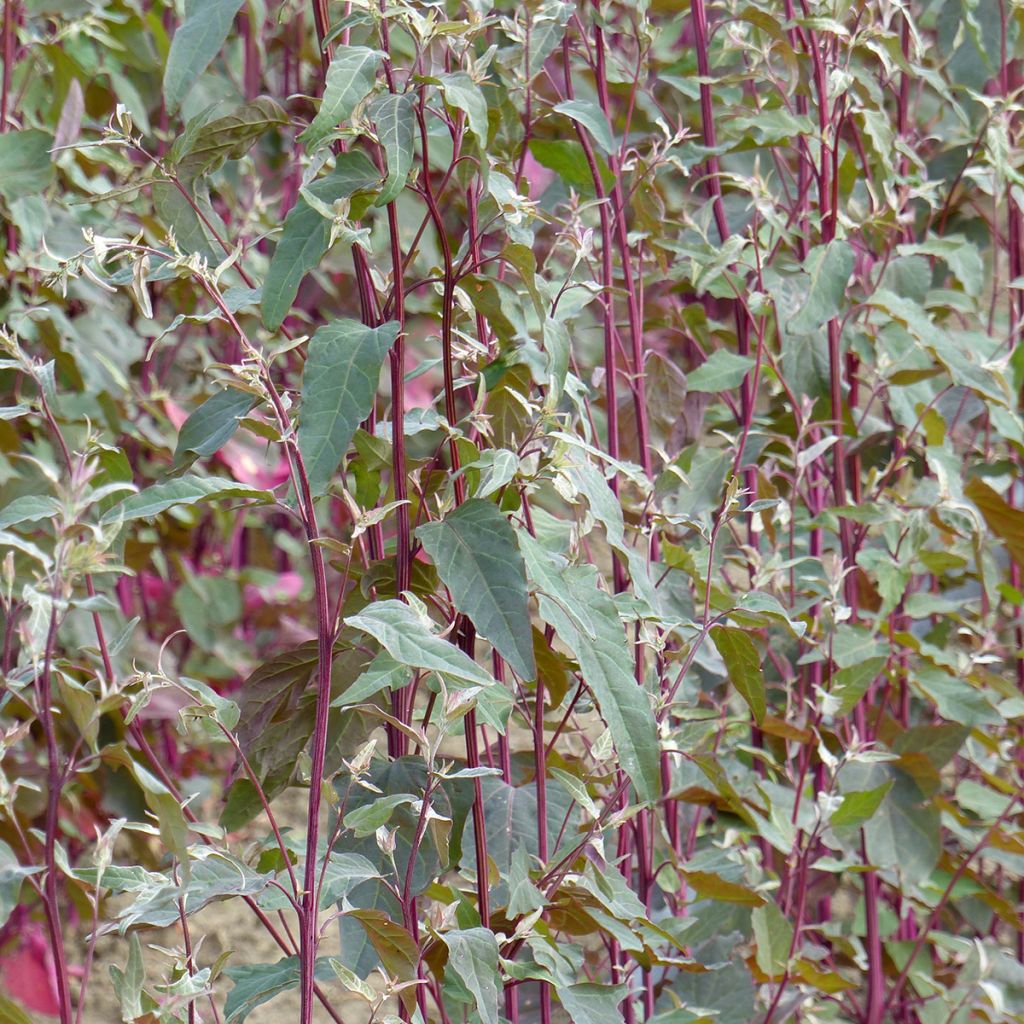

Atriplex hortensis Copper Plume - seeds
Atriplex hortensis Copper Plume - seeds
Atriplex hortensis Copper Plume
Garden Orache, Red Orache, Mountain Spinach, French Spinach
Special offer!
Receive a €20 voucher for any order over €90 (excluding delivery costs, credit notes, and plastic-free options)!
1- Add your favorite plants to your cart.
2- Once you have reached €90, confirm your order (you can even choose the delivery date!).
3- As soon as your order is shipped, you will receive an email containing your voucher code, valid for 3 months (90 days).
Your voucher is unique and can only be used once, for any order with a minimum value of €20, excluding delivery costs.
Can be combined with other current offers, non-divisible and non-refundable.
Why not try an alternative variety in stock?
View all →This plant carries a 6 months recovery warranty
More information
We guarantee the quality of our plants for a full growing cycle, and will replace at our expense any plant that fails to recover under normal climatic and planting conditions.
Would this plant suit my garden?
Set up your Plantfit profile →
Description
The Copper Plume orach is cultivated for its edible foliage, similar to spinach, and for its purple winged seed spikes, which are very attractive as a cut flower. It is a low-maintenance, large annual plant reaching almost 2 metres high. It can be grown in the vegetable garden or a sunny flower bed. It is sown in place, after the last frost, from March to July for a harvest from July to September.
Originally from Central Asia and Siberia, orach or Atriplex hortensis belongs to the Chenopodiaceae family, like its cousin, spinach. Like spinach, it is a leafy vegetable that had its heyday in the Middle Ages. It is known by various names: garden orach, cultivated orach, giant spinach or false spinach. This rapidly growing annual plant can reach between 1 and 2.5 metres high. The 'Copper Plume' variety reaches about 1.8 to 2 metres high. Its dark green leaves veined with purple are edible and decorative. They can be cooked like spinach: used raw in salads, quickly stewed or used in gratins, pies, ravioli... Like its famous cousin, it is a low-calorie vegetable, rich in fibre, vitamin C and minerals. Due to their high oxalic acid content, orach leaves should be consumed in moderation by people with kidney stones.
Atriplex hortensis Copper Plume is normally grown in the vegetable garden, but it can also be integrated into a flower bed. Place it at the back, as it quickly forms a tall clump of upright stems. At the ends of these stems, flower spikes measuring 30 to 40 cm long form. Each flower transforms into a small purple-winged seed which is very decorative. Once dried, usually in late summer, these spikes will be a sensation in your floral arrangements. They last for about 6 to 7 days in a vase.
Harvest: Pick the leaves as they develop, according to your needs. The first harvest usually takes place 4 months after sowing. Consume the leaves quickly after harvesting. Freezing is possible after blanching the leaves for 3 minutes in salted boiling water.
Report an error about the product description
Flowering
Foliage
Plant habit
Botanical data
Atriplex
hortensis
Copper Plume
Chenopodiaceae - Amaranthaceae
Garden Orache, Red Orache, Mountain Spinach, French Spinach
East Asia
Other Orache - Saltbush seeds
View all →Planting and care
Sowing:
Copper Plume orach germinates between 15 and 22°C, and it usually takes between 7 and 14 days to sprout.
Sow the seeds after the last frost (between March and July), directly in the soil, at a depth of 1 to 2 cm. Make holes with three seeds, spaced 40 to 50 cm apart in all directions.
When the plants have 3-4 leaves, thin them out to keep only the most healthy plant.
Cultivation:
Orach is a fast-growing plant that is easy to grow. It is undemanding. It appreciates the sun and well-drained soils, ideally rich and moist. Its only weakness is a tendency to quickly go to seed during dry periods. To remedy this, we recommend sowing little and often.
Sowing period
Intended location
This item has not been reviewed yet - be the first to leave a review about it.
Similar products
Haven't found what you were looking for?
Hardiness is the lowest winter temperature a plant can endure without suffering serious damage or even dying. However, hardiness is affected by location (a sheltered area, such as a patio), protection (winter cover) and soil type (hardiness is improved by well-drained soil).

Photo Sharing Terms & Conditions
In order to encourage gardeners to interact and share their experiences, Promesse de fleurs offers various media enabling content to be uploaded onto its Site - in particular via the ‘Photo sharing’ module.
The User agrees to refrain from:
- Posting any content that is illegal, prejudicial, insulting, racist, inciteful to hatred, revisionist, contrary to public decency, that infringes on privacy or on the privacy rights of third parties, in particular the publicity rights of persons and goods, intellectual property rights, or the right to privacy.
- Submitting content on behalf of a third party;
- Impersonate the identity of a third party and/or publish any personal information about a third party;
In general, the User undertakes to refrain from any unethical behaviour.
All Content (in particular text, comments, files, images, photos, videos, creative works, etc.), which may be subject to property or intellectual property rights, image or other private rights, shall remain the property of the User, subject to the limited rights granted by the terms of the licence granted by Promesse de fleurs as stated below. Users are at liberty to publish or not to publish such Content on the Site, notably via the ‘Photo Sharing’ facility, and accept that this Content shall be made public and freely accessible, notably on the Internet.
Users further acknowledge, undertake to have ,and guarantee that they hold all necessary rights and permissions to publish such material on the Site, in particular with regard to the legislation in force pertaining to any privacy, property, intellectual property, image, or contractual rights, or rights of any other nature. By publishing such Content on the Site, Users acknowledge accepting full liability as publishers of the Content within the meaning of the law, and grant Promesse de fleurs, free of charge, an inclusive, worldwide licence for the said Content for the entire duration of its publication, including all reproduction, representation, up/downloading, displaying, performing, transmission, and storage rights.
Users also grant permission for their name to be linked to the Content and accept that this link may not always be made available.
By engaging in posting material, Users consent to their Content becoming automatically accessible on the Internet, in particular on other sites and/or blogs and/or web pages of the Promesse de fleurs site, including in particular social pages and the Promesse de fleurs catalogue.
Users may secure the removal of entrusted content free of charge by issuing a simple request via our contact form.
The flowering period indicated on our website applies to countries and regions located in USDA zone 8 (France, the United Kingdom, Ireland, the Netherlands, etc.)
It will vary according to where you live:
- In zones 9 to 10 (Italy, Spain, Greece, etc.), flowering will occur about 2 to 4 weeks earlier.
- In zones 6 to 7 (Germany, Poland, Slovenia, and lower mountainous regions), flowering will be delayed by 2 to 3 weeks.
- In zone 5 (Central Europe, Scandinavia), blooming will be delayed by 3 to 5 weeks.
In temperate climates, pruning of spring-flowering shrubs (forsythia, spireas, etc.) should be done just after flowering.
Pruning of summer-flowering shrubs (Indian Lilac, Perovskia, etc.) can be done in winter or spring.
In cold regions as well as with frost-sensitive plants, avoid pruning too early when severe frosts may still occur.
The planting period indicated on our website applies to countries and regions located in USDA zone 8 (France, United Kingdom, Ireland, Netherlands).
It will vary according to where you live:
- In Mediterranean zones (Marseille, Madrid, Milan, etc.), autumn and winter are the best planting periods.
- In continental zones (Strasbourg, Munich, Vienna, etc.), delay planting by 2 to 3 weeks in spring and bring it forward by 2 to 4 weeks in autumn.
- In mountainous regions (the Alps, Pyrenees, Carpathians, etc.), it is best to plant in late spring (May-June) or late summer (August-September).
The harvesting period indicated on our website applies to countries and regions in USDA zone 8 (France, England, Ireland, the Netherlands).
In colder areas (Scandinavia, Poland, Austria...) fruit and vegetable harvests are likely to be delayed by 3-4 weeks.
In warmer areas (Italy, Spain, Greece, etc.), harvesting will probably take place earlier, depending on weather conditions.
The sowing periods indicated on our website apply to countries and regions within USDA Zone 8 (France, UK, Ireland, Netherlands).
In colder areas (Scandinavia, Poland, Austria...), delay any outdoor sowing by 3-4 weeks, or sow under glass.
In warmer climes (Italy, Spain, Greece, etc.), bring outdoor sowing forward by a few weeks.






























